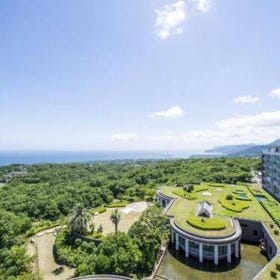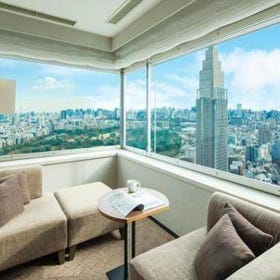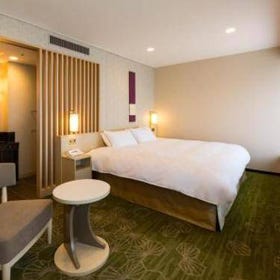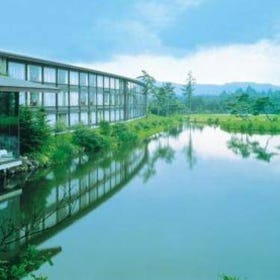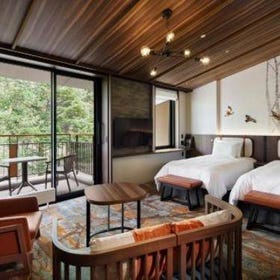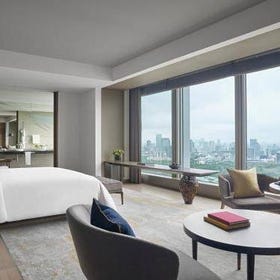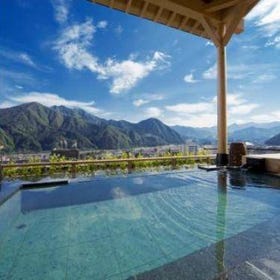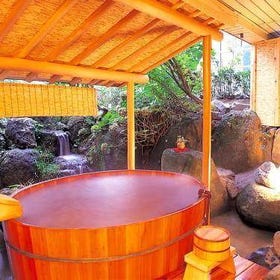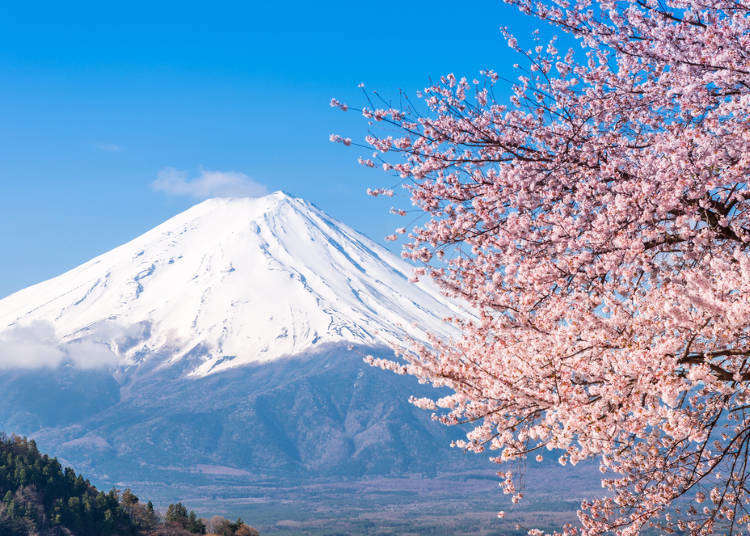
So you think you've visited Japan so many times that you've probably already explored everything the Tokyo Metropolitan area has to offer? Then the JR Tokyo Wide Pass may be just what you need to rejuvenate your love for the region and slightly beyond!
- Table of Contents
-
- What is the JR Tokyo Wide Pass?
- How much is the JR Tokyo Wide Pass?
- What areas & trains are covered by the JR Tokyo Wide Pass?
- How to purchase a JR Tokyo Wide Pass
- Recommended sightseeing areas covered under the JR Tokyo Wide Pass
- Transport connections to fun sightseeing areas from Tokyo
- Sample JR Tokyo Wide Pass itineraries by season
The JR Tokyo Wide Pass gives you unlimited access to Shinkansen bullet trains operating within the applicable area for three consecutive days as well as regular trains on all JR East lines and most private railway lines in eastern Japan.
This is perfect for travelers eyeing places like Nikko, Karuizawa, or Izu which are slightly farther away from central Tokyo.
To help you get the most value out of this fantastic train pass, we'll be sharing helpful information in this article about where and how to get your hands on one, scenic hotspots and must-try activities along the way, the nearest train stations to these attractions, how to transfer trains, the best seasonal destinations covered by the pass, and much more. Your journey starts right now!
What is the JR Tokyo Wide Pass?
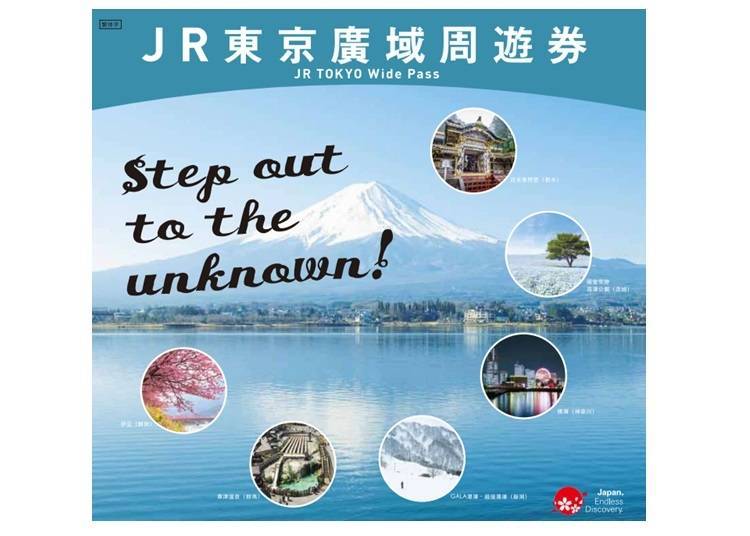
This is a travel pass offered by East Japan Railway Company (commonly known as JR East) to those holding a non-Japanese passport. It costs 15,000 yen per adult (aged 12 and above) or 7,500 yen per child (aged between 6 to 11). It covers Tokyo City and the prefectures of Gunma, Tochigi, Saitama, Ibaraki, Yamanashi, Kanagawa, and Chiba.
Once activated, the pass is valid for three consecutive days. It allows its holder to take unlimited rides on JR Shinkansen bullet trains, limited express trains, and regular trains, where you can reserve seats if you like or take any of the free seats available.
The pass also gives access to all trains running on JR East lines and some private railways in other cities and prefectures. This is a dream pass you should consider if you're planning to travel to any of the destinations mentioned above. You'll appreciate the value and convenience it offers for your trip.
How much is the JR Tokyo Wide Pass?
JR Tokyo Wide Pass price
・Adults (12 and above): 15,000 yen
・Children (6 to 11): 7,500 yen
What areas & trains are covered by the JR Tokyo Wide Pass?
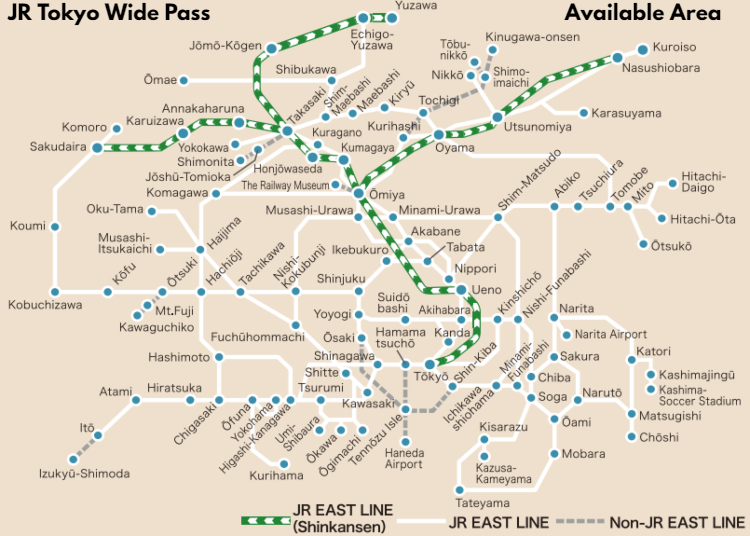
- JR EAST Lines
- Tokyo Monorail
- Izu Kyuko Line
- Fujikyu Railway Lines
- Joshin Dentetsu Line
- Saitama New Urban Transit (Ōmiya - the Railway Museum)
- Tokyo Waterfront Area Rapid Transit Line (Rinkai Line)
- Reserved seats in ordinary cars of the following express trains with through operations between JR East and Tobu Railway lines: Nikko, Kinugawa, and SPACIA Kinugawa trains.
- You can also use ordinary trains (including rapid trains) on the Tobu Railway lines between Shimo-imaichi and Tōbu-nikkō / Kinugawa-onsen.
- Between Kurihashi and Shimo-imaichi, you can only use express trains that have through operation with Tobu Railway.*
*The Tobu Railway Line between Shimo-Imaichi and Tobu-Nikko/Kinugawa-Onsen offers local and rapid train services. However, limited express trains starting and ending at Tobu Railway stations cannot be used. The JR Tokyo Wide Area Pass is valid for travel on Tobu Railway only if either the departure or destination station is a JR line station.
- You cannot use the JR TOKYO Wide Pass to travel on the Tokaido Shinkansen. (This is because the Tokaido Shinkansen is operated by a different company)
- An additional regular ticket fee is required when taking a train through areas not covered by the pass.
- Not valid for Hayabusa, Komachi, or GranClass seats. An additional fee is required if you wish to use these trains or the GranClass carriage.
- On Fujikyu Railway, you must take a numbered ticket when you board the observation car of the Fujisan Express, and a seating ticket when you board the Fuji Tozan Densha. (Separate fare applies.)
- An additional fee is required if you wish to use Car No. 1 on the Fujisan Express, Fujisan View Express, or the Fuji Tozan Densha on the Fujikyuko Line.
- The pass is only valid if the starting or ending station is on a JR Line when using an express train with through service on Tobu Railway lines.
- Gala Yuzawa Station only operates during the winter and spring.
How to purchase a JR Tokyo Wide Pass
・Method 1: Purchase online from the JR East online train reservation page, then collect the pass from the ticketing counter you selected after arriving in Japan. Don't forget to bring along your passport!
How to buy a JR pass online: https://www.eki-net.com/top/tr/guide/reserve/pass.html
・Method 2: Purchase directly from sales counters in the areas covered by the JR Tokyo Wide Pass using your passport. If you have a biometric passport, you can also purchase the pass from a reserved seat ticket vending machine. This allows the machine to verify relevant information accurately and quickly dispense the pass.
How to use a reserved seat ticket vending machine to buy the pass / Vending machine locations:
https://www.jreast.co.jp/tc/downloads/pdf/passport_operation_tc.pdf
Sales counters for direct purchase or collection of the pass:
- Narita Airport Terminal 1
- JR East Travel Service Center / JR Ticket Office / Narita International Airport Terminal 1 Travel Center
- Haneda Airport Terminal 2
- TOURIST INFORMATION CENTER HANEDA AIRPORT TERMINAL 2
- Tokyo Station
- JR East Travel Service Center (Marunouchi North Exit) / JAPAN RAIL CAFE
- Shinagawa Station
- JR East Travel Service Center
- Ueno Station
- JR East Travel Service Center
- Shinjuku Station
- JR East Travel Service Center (New South Gate) / JR East Travel Service Center (East Exit)
- Ikebukuro Station
- JR East Travel Service Center
- Shibuya Station
- JR East Travel Service Center
- Yokohama Station
- JR East Travel Service Center
- Mito Station
- Ticketing machine *JR ticket office (JR East Travel Service Center)
- Funabashi Station
- JR East Travel Service Center
- Hamamatsucho Station
- JR East Travel Service Center
- Kashiwa Station
- JR East Travel Service Center
- Kawasaki Station
- JR East Travel Service Center
- Omiya Station
- JR East Travel Service Center
- Tachikawa Station
- JR East Travel Service Center
- Only visitors holding non-Japanese passports may purchase and use this pass.
- Only the holder of the passport used to purchase this pass may use it. Please bring along your original passport when purchasing or using this pass to facilitate verification.
- One passport can only be used to purchase one pass with a certain validity period. To buy more than one pass using one passport, the validity periods of the passes must not overlap each other.
- The validity period of the pass cannot be changed after purchase, so double and triple check the dates before making your purchase!
- Only unused passes still within the validity period may receive a refund, which can be applied for via JR Tokyo Wide Pass sales counters (with the exception of a few locations).
- No refunds will be given for issued reserved seat tickets that have exceeded the specified train's departure time.
- No replacements will be issued for passes that have been lost or stolen. A new pass must be purchased should you wish to use it again.
Recommended sightseeing areas covered under the JR Tokyo Wide Pass
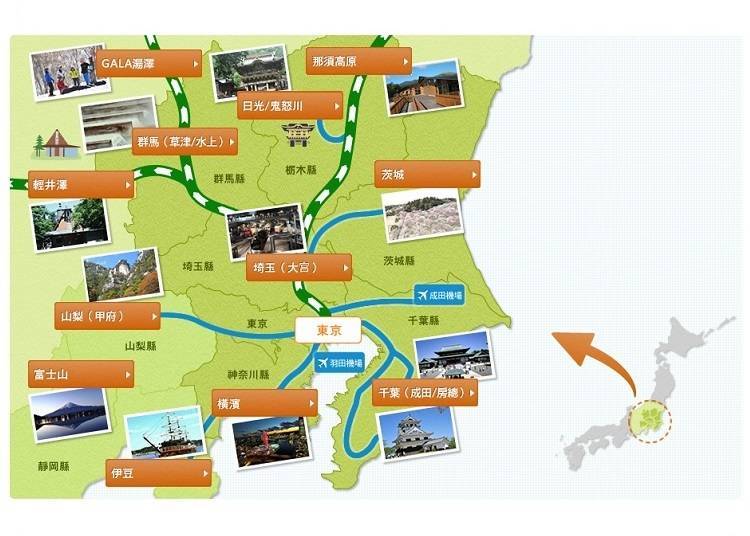
Tochigi: Nikko Toshogu, Lake Chuzenji, Kegon Falls
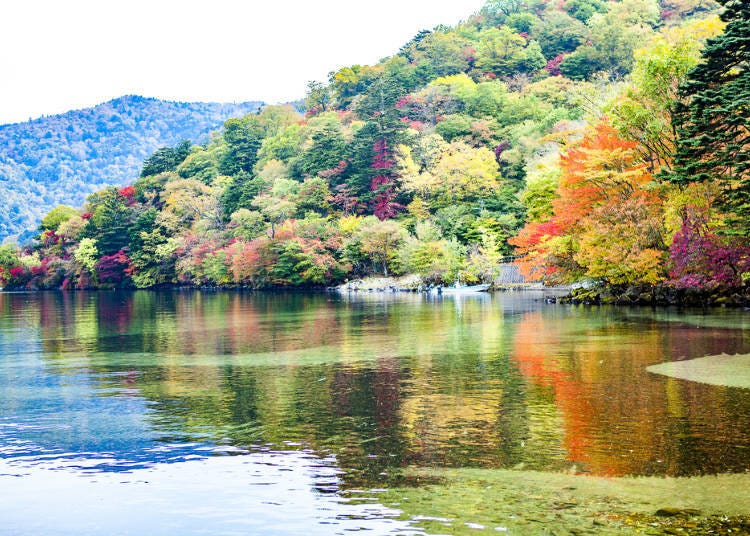
Traveling to Nikko by train from Tokyo takes about 1 hour and 40 minutes. The most famous place of interest here is the Nikko Toshogu Shrine, one of the Shrines and Temples of Nikko, a UNESCO world heritage site.
This is the main shrine to the many Toshogu shrines in Japan. Some of the must-see artifacts on display here are the carvings on the interior decor, such as the peaceful nemuri-neko (sleeping cat), and depictions of ancient Chinese tales like the three wise monkeys, Xu You the ear washer, and the seven sages of the bamboo groove.
As for Lake Chuzenji located deeper in the Okunikko area, many local tourists come over during mid-October to admire a truly unbelievable sight of fiery maple leaves spread all around the waters.
Kegon Falls is also located here, and it's known as one of Japan's top three waterfalls. The thundering sound of the mighty stream falling directly downward creates a scene that is both intimidating and awe-inspiring at the same time. Definitely worth a visit!
Ibaraki: Kairakuen, Hitachi Seaside Park
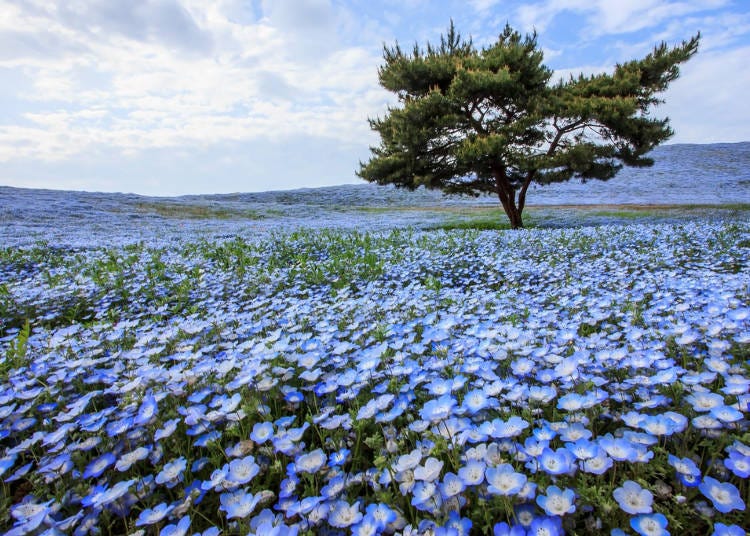
Kairakuen is a Japanese-style garden in Ibaraki Prefecture's Mito City that has a great reputation among local nature lovers and is known as one of Japan's top three gardens alongside Kenrokuen in Ishikawa Prefecture's Kanazawa City and Korakuen in Okayama Prefecture's Okayama City.
A vast swath of Kairakuen is covered with plum trees that showcase their amazing blossoms between late February to early March every year. When the trees are in full bloom together, this part of the garden is a wondrous sight to behold.
As for Hitachi Seaside Park, this is a 200-hectare wide garden that has captivated flower admirers from the world over. No matter which season you happen to find yourself in this floral wonderland, the area is going to be carpeted with a thick layer of delicate petals that will delight your senses.
The colors can get especially vibrant and vivid during the pollination season between spring to summer when the scenery is further enhanced by flamboyant butterflies fluttering to and fro colorful blooms. No wonder people from all over the world flock here every year!
Seasonal Highlights
・Spring: Narcissus, tulips, poppies, etc.
・Summer: Lavenders, zinnias, daisies, sunflowers, etc.
・Autumn: Pampas grass, kochia scoparia grass, cosmos, oxeye daisies, etc.
・Winter: Marigolds, autumnal leaves, plum blossoms, wintersweets, etc.
Yamanashi / Shizuoka - Mount Fuji, Lake Kawaguchi
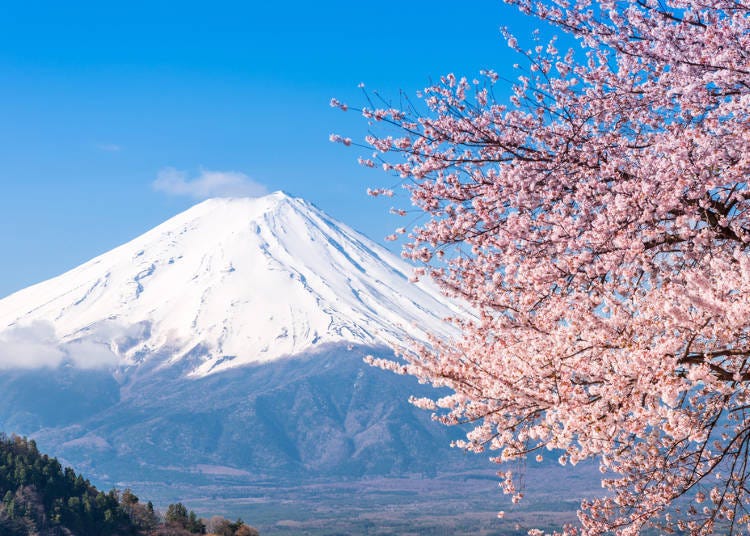
The iconic sight of Mount Fuji is practically synonymous with the country of Japan itself, and hiking up this beautiful mountain in summer or touring the five lakes district around it is but a couple of the more popular activities visitors are encouraged to try during their visit.
If you enjoy getting in touch with nature, stop by the 5th station along the Fuji Subaru line, which will take you about halfway up the mountain. This is also the starting point for Mount Fuji hiking trails.
Popular attractions in the area include the famous Lake Kawaguchi, which comes equipped with an incredible view of Mount Fuji in the distance. You could also bathe in a hot spring or climb aboard the Mount Fuji Panoramic Ropeway and head to Tenjozan Park.
If you're visiting from mid-April to late May, try to catch sight of the Shibazakura Festival and be amazed by the incredible view of a field of shibazakura flowers stretching for as far as the eye can see, with Mount Fuji looming proudly over them in the background.
Fancy the idea of screaming at the top of your lungs on Japan's most well-known mountain? Then you'll enjoy the exciting Fuji-Q Highland amusement park at the foot of Mount Fuji, along with other shopping and entertainment facilities such as Gotemba Premium Outlets. Whether you're into thrill rides or chill vibes, Mount Fuji has them all and more!
Shizuoka: Atami Onsen, Izu
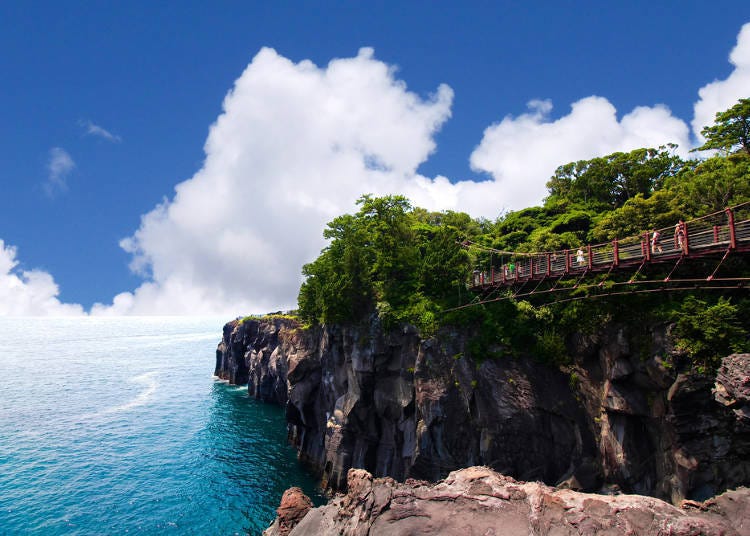
The farthest you can go using the JR Tokyo Wide Pass is the Izu Peninsula in Shizuoka Prefecture. Located right next to the sea, the area is naturally endowed with an abundance of beautiful sceneries.
You'll also find quite a number of hot spring resorts along the coastline, and legend has it that feudal shogun Ieyasu Tokugawa was rather fond of bathing in the hot springs of Atami himself, so this is your opportunity to feel like a shogun for a day!
Sakura season also comes slightly earlier than usual in the town of Kawazu, with flowers starting to bloom in late February and coming into full bloom by around mid-March.
The Kawazu Cherry Blossom Festival held during this period allows visitors to stroll along pavements decorated with blooming sakura trees, and as you would expect, the event draws large crowds of flower admirers every year.
Since it only takes about 2 to 3 hours to come to Izu from Tokyo by Shinkansen bullet train, it's the perfect distance for a short but relaxing day trip from the city for flowers, hot springs, beaches, nature, and more. The fact that it offers new sights and experiences every season is just the cherry on top!
Nagano: Karuizawa
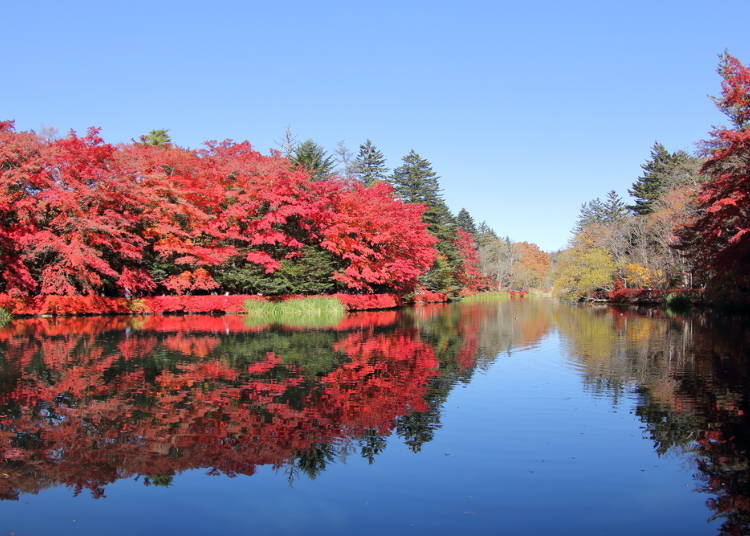
Also known as Japan's summer retreat, Karuizawa's climate is cooler and milder compared to Tokyo, and it only takes about an hour to get here from Tokyo via Shinkansen.
The area's prime location, fantastic views, and well-equipped facilities have understandably earned it a good reputation among both local and international tourists, and that's also why some have chosen to purchase property here for future use as vacation villas.
Since it's comfortably sunny in Karuizawa during summer, going on a bicycle tour around the area is one of the best things you could do during a trip here.
Once you've enjoyed the caress of a pleasant breeze and absorbed all the healing phytoncides given off by the plants in the forest, you can drop by the Old Karuizawa Ginza Shopping Street to check out the shops and their goods, among which fruit jams deserve a special mention for the sheer quantity of jams available alone. That also means it'll be easy to find the one that suits your palate most, so remember to put it on your shopping list!
About a 15-minute train ride from the station is the Hoshino Resort, where you can find accommodations, hot springs, forests, and a full array of relaxation facilities for the nature lover to enjoy.
One of the must-see attractions in Karuizawa is Kumoba Pond, which is less than 10 minutes away by train. The unforgettable views it offers all year round include vibrant greenery during summer and warm hues during autumn, all reflected against the near mirror-like waters of the pond for double the delight.
You'll find the Karuizawa Prince Shopping Outlet in the vicinity, designed to satisfy both the value hunter and luxury fan. Karuizawa's not all about cooling down during summer too. In winter, plenty of ski resorts open their doors for business and offer a completely different type of experience from what Karuizawa is best known for. And difference is good, right?
Niigata: Echigo-Yuzawa
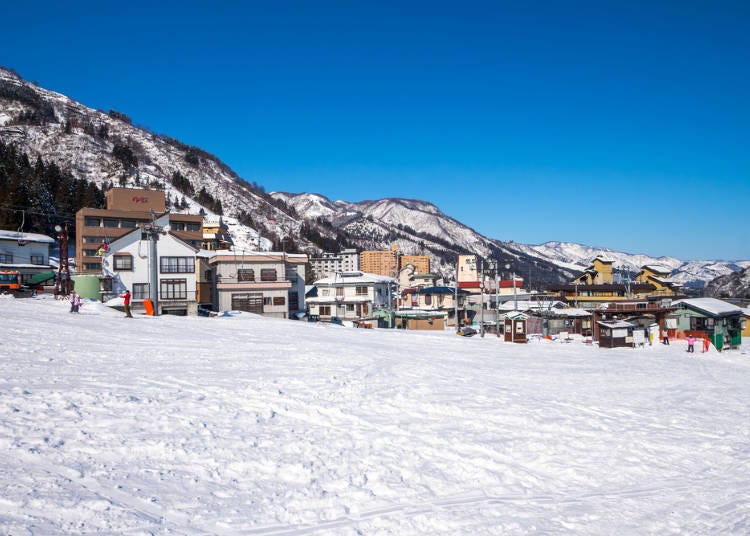
Echigo-Yuzawa is such an enjoyable ski area that it's a special addition to the JR Tokyo Wide Pass area during the winter season so as to allow as many people access to the area as possible.
The largest ski resort here is Gala Yuzawa, and it has plenty of slopes of differing difficulties for you to either practice the basics or challenge yourself at your own pace.
The resort rents out gear, clothing, shoes, and visors for skiing and conducts classes for beginners, so everyone is welcome here! It takes about 75 minutes to travel here from Tokyo.
If your next visit to Japan falls between November to May, definitely consider dropping by to try out some snow sports here.
(*Gala Yuzawa Station is only open in winter and spring.)
Fans of Japanese rice will be happy to know that you can buy the famous Niigata premium koshihikari rice directly from shops inside Echigo-Yuzawa Station itself, along with other local specialties and souvenirs.
Another place of interest to look out for is the Echigo Sake Museum, a bar with over a hundred types of alcoholic beverages for you to sample at leisure.
Transport connections to fun sightseeing areas from Tokyo
Here's a quick list of trains and ticket prices you can expect to pay without a JR Tokyo Wide Pass for you to see at a glance just how much you'll be saving by getting this incredible pass!
- Prefectures/Stations
- Via: Name of rail line
Fare: One-way fare (total journey time, number of train changes)
- Niigata / Echigo Yuzawa
- Via: JR Joetsu Shinkansen
Fare: 6,260 yen (approx. 1 hour and 19 minutes, no transfer)
- Nagano / Karuizawa
- Via: JR Hokuriku Shinkansen
Fee: 5,490 yen (approx. 1 hour 12 minutes, no transfer)
- Ibaraki / Mito
- Via: JR Joban Line Limited Express (reserved seats only)
Fare: 3,890 yen (approximately 1 hour and 20 minutes, no transfer)
- Tochigi / Nikko
- Via: JR Tohoku Shinkansen + JR Nikko Line
Fare: 5,150 yen for a paper ticket (approx. 1 hour and 50 minutes, 1 train change)
- Shizuoka / Izukyū-Shimoda
- Via: Limited Express Odoriko
Fare: 6,180 yen (approx. 2 hours and 4 minutes)
- Shizuoka / Atami
- Via: Limited Express Odoriko
Fare: 3,560 yen (about 1 hour and 20 minutes)
- Yamanashi & Shizuoka / Mount Fuji
- Via: JR Chuo Line Limited Express (reserved seats only)/Fujikyuko Line
Fare: 3,580 yen (approx. 2 hours and 22 minutes, 1 train transfer)
*Unless otherwise indicated as reserved seating-only, all prices indicated are one-way adult free seating fares.
*The railway lines, trip durations, and ticket fares indicated here are for reference only and subject to change depending on actual conditions, train timing, and seat type.
Sample JR Tokyo Wide Pass itineraries by season
Spring: Ibaraki & Izu - 3-Day Flower and Beach Tour
・Total transport fare for 3 days: 19,330 yen
Amount saved using JR Tokyo Wide Pass: 4,330 yen
Day 1: Take a train from Tokyo Station to Mito Station on the JR Utsunomiya Line (about 1 hour 20 minutes) → Admire plum blossoms in Ibaraki Kairakuen for a day → Back to Tokyo
* Transport fee: 7,780 yen (round trip on a JR Joban Line limited express)
Day 2: Take an Odoriko train from Tokyo Station to Kawazu Station (about 2 hours 31 minutes) → Admire sakura at the Kawazu Cherry Blossom Festival → Stay overnight in a hotel in Izu Kogen Onsen
* Transport fee: 5,930 yen (Odoriko)
Recommended accommodations in Izu
Day 3: Take a train on the Izu Kyuko Line from Izu Station to Jogasaki-Kaigan Station (about 32 to 38 minutes, 1,880 yen) → Enjoy the scenery at Jogasaki Coast → Take a train on the Izu Kyuko Line from Jogasaki-Kaigan Station and connect to Atami Station on the JR Ito Line, then transfer to the JR Ueno-Tokyo Line to return to Tokyo (about 2 hours and 44 minutes)
* Transport fee: 922 yen (Izu Kyuko Line) + 3,740 yen (return trip)
Summer: Mount Fuji & Nikko - 2-Day Sacred Mountains of Japan Tour and 1-Day Heritage Sites Tour
・Total transport fare for 3 days: 16,540 yen
Amount saved using JR Tokyo Wide Pass: 6,340 yen
Day 1: Take the Fuji Excursion from Shinjuku Station directly to Mt. Fuji Station (around 1 hour 45 minutes) → Hike up Mount Fuji → Stay overnight in a mountain lodge (advanced reservation required)
* Transport fee: 4,000 yen (Fuji Excursion)
Day 2: Be awed by the majestic sunrise on Mount Fuji (known as Goraiko), then descend the mountain → Take a train from Mount Fuji Station on the Fujikyuko Line to Kawaguchiko Station (about 5 minutes) → Sightsee around Lake Kawaguchi → Take the Fuji Excursion from Kawaguchiko Station back to Shinjuku (about 1 hour 55 minutes)
* Transport fee: 230 yen (Fujikyuko Line) + 4,130 yen (Fuji Excursion)
Recommended hotels in Shinjuku
Day 3: Take the JR Limited Express Nikko from Shinjuku Station to Tobu-Nikko Station (about 2 hours) → Tour UNESCO world heritage sites Nikko Toshogu, Rinnoji, and other shrines and temples → Return to Shinjuku
* Transport fee: 8,180 yen (JR Limited Express Nikko round trip)
Autumn: Karuizawa & Nikko - 2-Day Karuizawa Nature Tour + 1-Day Nikko Tour
・Total transport fare for 3 days: 21,280 yen Amount saved using JR Tokyo Wide Pass: 12,160 yen
Day 1: Take a train from Tokyo Station to Karuizawa Station on the JR Hokuriku Shinkansen (about 1 hour 12 minutes) → Rent a bicycle to sightsee therapeutic forests, maple leaves at Kumoba → Stay overnight in a Karuizawa hotel
* Transport fee: 5,490 yen (Hokuriku Shinkansen)
Recommended hotels in Karuizawa
Day 2: Shopping therapy at Old Karuizawa Ginza Shopping Street, Karuizawa Prince Shopping Outlet → Take a train from Karuizawa Station back to Tokyo Station on the JR Hokuriku Shinkansen (about 1 hour 12 minutes)
*Transport fee: 5,490 yen (Hokuriku Shinkansen)
Recommended hotels in Tokyo
Day 3: Take a train from Tokyo Station to Utsunomiya Station on the Tohoku Shinkansen, transfer to Nikko Station on the JR Nikko Line (about 1 hour 49 minutes) → Catch scenic maple leaves at Lake Chuzenji in Okunikko, visit Kegon Falls → Take a train from Nikko Station to Utsunomiya Station on the JR Nikko Line, transfer back to Tokyo Station on the Tohoku Shinkansen (about 2 hours)
* Transport fee: 10,300 yen (round trip on the Tohoku Shinkansen + JR Utsunomiya Line)
Winter: Echigo-Yuzawa & Atami - 2-Day Gala Yuzawa Ski Tour + Atami Hot Springs
・Total transport fare for 3 days: 20,860 yen
Amount saved using JR Tokyo Wide Pass: 5,860 yen
Day 1: Take a train from Tokyo Station to Gala-Yuzawa Station on the JR Joetsu Shinkansen (about 1 hour 15 minutes) → Have fun skiing at Gala Yuzawa Snow Resort → Stay overnight at a hotel in the Joetsu or Yuzawa area
* Transport fee: 6,690 yen (Joetsu Shinkansen)
Recommended hotels in Yuzawa
Day 2: More skiing fun at Gala Yuzawa Snow Resort → Visit Echigo Sake Museum at Echigo-Yuzawa Station → Take a train from Echigo-Yuzawa Station back to Tokyo on the JR Joetsu Shinkansen (about 1 hour 20 minutes)
* Transport fee: 6,690 yen (Joetsu Shinkansen)
Day 3: Take an Odoriko train from Tokyo Station to Atami Station (about 1 hour 20 minutes) → Rest and relax at an onsen in an Atami hot spring resort → Take an Odoriko train back to Tokyo (about 1 hour 20 minutes)
* Transport fee: 7,480 yen (Round trip on the Odoriko)
*Fares, lines, schedules, and other transport-related information are for reference only and subject to change depending on actual conditions. For latest information, always check with the station in-person or contact the East Japan Railway Company.
- Area
- Category
*Prices and options mentioned are subject to change.
*Unless stated otherwise, all prices include tax.
Recommended places for you
-

Nagano Travel Guide: Hot Springs, Skiing, Hiking & Best Times to Visit
by: Mizue Ito
-

Where to Stay in Matsumoto: 15 Excellent Accommodations Near the Alps, Castle & Onsens
by: Himanshi Shah
-
Ad

Tokyo Comedy Bar: Where Jokes and Craft Beer Flow Freely
-

Can Art Explain Godzilla? Tokyo's New Exhibit Takes a Shot
-

Where to Stay in Nagano: Curated Selection of Hotels for Every Travel Budget
by: Himanshi Shah
-

Best Things to Do and See in Tokyo in May 2025: Area Events and Festivals
by: Kaori Kimura
Inspiration for Accommodations
-

Enjoy Mt. Fuji from the Comfort of Your Room! Recommended Ryokan with Mt. Fuji View
-

Stay Near the Cherry Blossoms! Hotels for Cherry Blossom Viewing in Tokyo
-

Family-Friendly Hotels with Free Shuttle to Disneyland: Convenient Access for a Magical Stay
-

Top Ranked Hakone Hotels with Mt. Fuji View: Enjoy Stunning Scenery from Your Private Space
-

Convenient Tokyo Hotels with Airport Shuttle: Ideal for Families and Heavy Luggage
-

Stunning Tokyo Tower View Hotels: Enjoy Spectacular Scenery from Your Private Space
-

Convenient Asakusa Hotels with Kitchens: Ideal for Extended Family Visits
-

Experience Luxury: Hakone's 10 Best Five-Star Accommodations
-

Enjoy Mt. Fuji Autumn Leaves! Top Hotels Near the Popular Autumn Leaves Corridor
-

Experience Hakone Fall Foliage from Your Room with Stunning Views
-

Typhoon Safety Guide: What Tourists Need to Know When Visiting Japan
-

Exploring Tokyo: 4 Must-Visit Spots around Tokyo Station
-

Explore Izumi, a charming Japanese city that attracts over 10,000 cranes during the winter
-

Essential Tokyo: The Complete Guide to Ikebukuro Station
-

Healthcare in Japan for Tourists: What to Do When You Get Sick or Injured in Japan
-

Tokyo Events: Celebrating Earth Day Tokyo 2018
- #best ramen tokyo
- #what to buy in ameyoko
- #what to bring to japan
- #new years in tokyo
- #best izakaya shinjuku
- #things to do tokyo
- #japanese nail trends
- #what to do in odaiba
- #onsen tattoo friendly tokyo
- #daiso
- #best sushi ginza
- #japanese convenience store snacks
- #best yakiniku shibuya
- #japanese fashion culture
- #best japanese soft drinks























